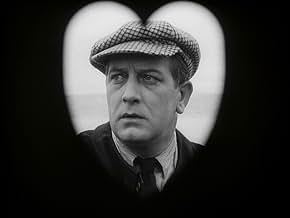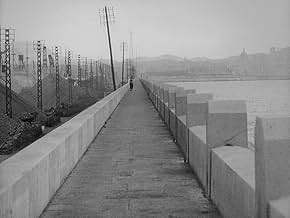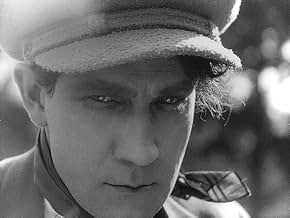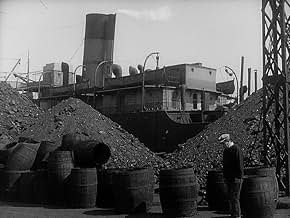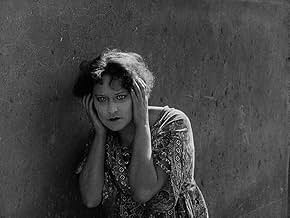अपनी भाषा में प्लॉट जोड़ेंMarie wants to escape from her job and also from her lover, Paul, an unemployed drunk. She dreams of going off with Jean, a dockworker. The two men quarrel and fight over Marie on two occasi... सभी पढ़ेंMarie wants to escape from her job and also from her lover, Paul, an unemployed drunk. She dreams of going off with Jean, a dockworker. The two men quarrel and fight over Marie on two occasions, but Paul retains a hold over her. Marie has a baby who falls ill and as time goes on ... सभी पढ़ेंMarie wants to escape from her job and also from her lover, Paul, an unemployed drunk. She dreams of going off with Jean, a dockworker. The two men quarrel and fight over Marie on two occasions, but Paul retains a hold over her. Marie has a baby who falls ill and as time goes on Jean and a crippled neighbor try to help the child. Paul nearly causes the death of the ch... सभी पढ़ें
फ़ीचर्ड समीक्षाएं
Coeur fidele is a contemporary romance whose poetry of the waterfront combines a sordid realism with a stunning visual lyricism- the film is early evidence of Jean Epstein's concern with exploring the expressive possibilities of the cinema. Instead of developing the story conventionally through dramatic confrontations... Epstein emphasizes simple patterns of rhetorical figuring and several ambiguous sequences of privileged subjectivity. In addition, Coeur fidele makes use of an astounding and memorable close-up of it's protagonists staring hauntingly through a window. Gina Manes face (as she looks out of the dirty bistro window)- in a stunning and beautiful image that seems to hover over the narrative itself- that floats over the water of the squalid, dismal harbor.
As previously mentioned, Coeur fidele is a love story in which Marie Epstein plays a minor but significant role as the crippled neighbor of the heroine. As the lovers are reunited (enabled by Marie's shooting of the villainous and drunken husband), the heroine's sick child remains in the dingy apartment as Mademoiselle Marice, dazed by her violently provoked action, cradles the infant on the wooden stairs. There are the last images of Marie, inter-cut with shots on the happy couple on the carnival ride that had been the scene of their separation.
The merry-go-round sequence in Coeur fidele has become an accepted "classic" of cinematic impressionism, as many viewers were (and are) greatly impressed by the striking sequence set on the merry-go-round, on which the heroine rides while in a state of extreme mental agitation. Epstein, inspired by Abel Gance's La Roue, experimented in this scene with the editing of very short bits of film in regular, rhythmic patterns. This section of rapid montage and camera movement has been called by Rene Clair "visual intoxication."
It's a rarity movie critics have such an influence on the future of cinema while applying their theories to actual motion picture making. Polish-born/French resident Jean Epstein was part of that rare breed of observers and innovators in film. The writer composed several highly-influential articles focused primarily on the visual forms in cinema. Epstein expanded the idea of 'photogenie,' a term used as early as 1874 to define photography that contained more art than just simple portraits or landscapes. By inserting an aesthetic priority into movies, Epstein articulated the separation between the auteur and the more straight-forward fillmmakers' in the metteurs-en-scene camp.
Epstein knew the practice of filming stage plays in their entirety and presenting them on the big screen was not taking advantage of what cinema had to offer. He frowned upon the heavily-laden, overly-complex plots the film industry was producing; he favored the more visual, simple narratives. Camera placements where movement takes place, especially positioned in areas such as he did on a merry-go-round, plays a part in photogenie. He especially emphasized the close-up as an integral element in his philosophy. He claimed there is none greater movement than framing a close-up of the movie's characters where faces can express their inner emotions and souls. No finer example of Epstein's point is the finale of Segio Leone's 1966 'The Good, the Bad and the Ugly,' where the three combatants in a circle are seen in extreme closeups before shooting.
Epstein's numerous articles were eagerly read by filmmakers home and abroad. 'The Senses,' 'Magnification,' 'On Certain Characteristics of Photogenie' among others helped define the uniqueness of cinema and its artistic merits. He was especially impressed by Abel Gance's 1922 'La Roue' with its rhythmic montage of quick cuts following the opening train crash. Epstein's explanation on the varying short edits anticipated Soviet Union's Sergei Eisenstein's work on montage editing.
Epstein was unusual in that he possessed the ability to not only express deep intellectual treatises on cinema's uniqueness, but was able to display his theories on screen. His November 1923's "The Faithful Heart"-"Coeur fidele" in French-illustrates the critic's written statements on film. He claimed he and his sister drew up its simple plot in one night. Their narrative served the purposes Epstein had in mind, where "a melodrama so stripped of all the conventions ordinarily attached to the genre, so sober, so simple, that it might approach the nobility and excellence of tragedy." The story deals with an orphan adopted by a bar-owner and is an object of love by a lazy thug. Counterbalancing the undesirable Petit Paul is a hard-working dockworker, Jean, whom Marie, the orphan, loves. Through a series of fights, Petit Paul and Jean vie for Marie, who is swept by the tide of one, then by the other. Epstein's realistic display of the gritty Marseille France docks and the sordid surroundings of the trio's were inspirational to future French directors such as Jean Vigo and Marcel Carne.
Epstein's script was probably inspired by the novelists from the nineteenth century,probably Victor Hugo and Emile Zola.Marie is nobody's child:she was brought up by a shrew and her husband who never showed some affection to her:she is akin to Cosette or Fantine in "les Miserables ".Petit Paul seems to come from Zola's "L'Assommoir" the seventh volume in the Rougon-Macquart saga.
Marie and Jean are unfortunate lovers ;Jean is a good man,in the noblest
sense of the word .Epstein's closest relative in the cinema field is Frank Borzage in "Coeur Fidele",with whom he shares the same fascination for the fair and the merry-go-rounds (see "little man what now?") Like Abel Gance ,Epstein was a pioneer: the scene on the fairground has a sense of madness which makes the viewer dizzy ;it predates Hitchcock's experimentations in "Strangers on a train" by thirty years.For that scene alone,the movie would be essential viewing;with the addition of another extraordinary scene when the crippled girl,whose crutch has been crushed by a car crawls all along the way to save her friends,it becomes a major twenties French classic.
क्या आपको पता है
- ट्रिवियाThe director of the film, Jean Epstein said he chose to film a simple story of love and violence "to win the confidence of those, still so numerous, who believe that only the lowest melodrama can interest the public", and also in the hope of creating "a melodrama so stripped of all the conventions ordinarily attached to the genre, so sober, so simple, that it might approach the nobility and excellence of tragedy."
- कनेक्शनFeatured in Trente ans de silence: Gina Manès (1965)
टॉप पसंद
- How long is The Faithful Heart?Alexa द्वारा संचालित
विवरण
- चलने की अवधि1 घंटा 27 मिनट
- रंग
- ध्वनि मिश्रण
- पक्ष अनुपात
- 1.33 : 1
इस पेज में योगदान दें



